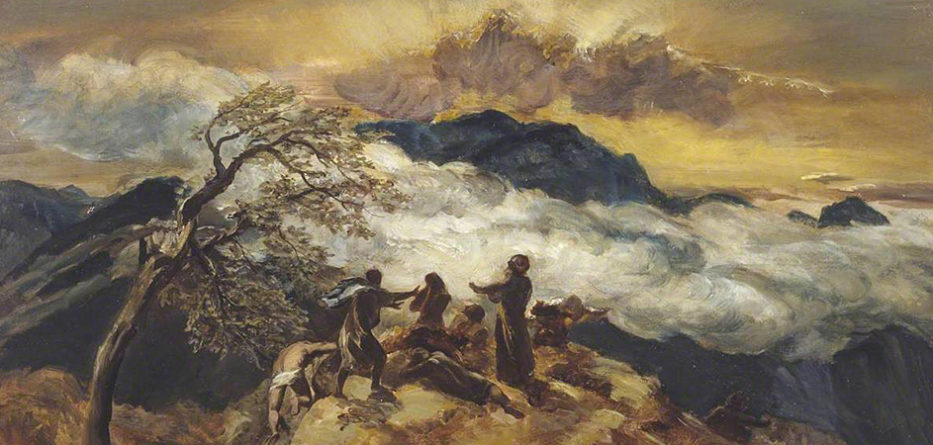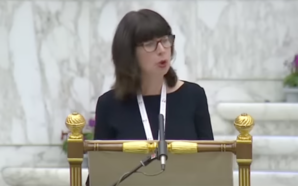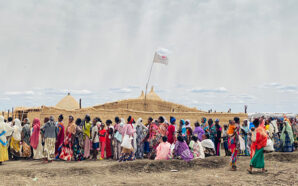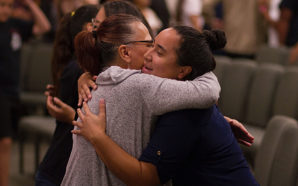This is the second of three pieces by Fr Joseph Lam on God in times of the pandemic. Read Part One here.
The Temple of Jerusalem
Jerusalem is to Judaism what Mecca is to Islam. Yet, it was the Temple that gives prominence to Jerusalem. Within this religious setting, Jerusalem was regarded as ‘the superlative place for the divine-human communication on earth.’ [1] Eventually, the Temple of Jerusalem became Israel’s National Shrine where sacrificial worship was centralised.[2] It was the priestly redactors of the Pentateuch who have promoted this concentration of cult. From their pencil’s ink emerges a monotheism unifying the two “fraternal” kingdoms of Israel and Judah. The passage 2 Chr 28:8-15 may serve here as a clear witness of this attempt where the priestly authors appealed to the “God of your ancestors” (28:9) or to the “Lord your God” (28:10) and later simply to “God” (28:11). It is not just a stylistic tactic but reveals the theological conviction of the whole priestly text that defines God as ‘your God’ or the ‘God of your forefathers,’ meaning Yahweh is the God of Israel and Judah. This passage could be seen as part of Israel’s Credo. Hence, there can be only one Temple because there is only one God.[3] The Temple of Jerusalem is, therefore ‘identical’ with the presence of God.
Ezekiel, who was a prophet as well as a priest, adheres to this theological tradition, though he, later on, modifies it to suit the context of exile. We will return to it a little bit later in this essay. According to the priestly view, the significance of the Jerusalem Temple, as Tzivi Novick has explained convincingly, is based on the narratives of the creation, Noah and lastly of the Exodus. The main focus of these biblical stories were the creation of humanity in the image of God, the offering of sacrifices as thanksgiving to God’s rescuing action and the and erection of sanctuaries as perpetual memorials of the presence of God. Combining these three stages of Israel’s redeeming history, the priestly editors conceived the Temple as the pinnacle of God’s permanent dwelling in Jerusalem[4] embodying the microcosm or a “miniature” God’s image that renews creation and epitomises the divine order over chaos.[5] According to Psalm 42:3, the Temple is the place where the face of God can be gazed at and His name be called upon (1 Kgs 8:29). In this sense, the Temple models the divine heavenly palace.[6]
Preconceived by the Messianic king David, the Temple was planned, but only completed under the reign of Solomon,[7] the arguably wisest king of Israel.[8] Because of the Temple, the vast majority of the inhabitants of Jerusalem shared the firm confidence that – as long as the Temple was in Jerusalem – the City, indeed the whole Land was safe and indestructible.[9] The Temple provides a strong sense of security occasionally causing arrogance towards other nations.[10] Moreover, the strong emphasis on the Temple has led the inhabitants to become lethargic in their religious observance and ritual practices.
By the time of the kings, especially between the eighth and sixth centuries BCE, the Temple in Jerusalem came under severe criticism by the prophets. Jeremiah,[11] Isaiah[12] and Ezekiel[13] in particular denounced the idolatrous inclusion and practices that Israel’s kings who through their political alliances and arranged marriages with foreign princesses have added to the Temple worship. Even though there were attempts of religious reforms during the reign of Hezekiah and Josiah, [14] the period of the kings was a time of debility and detachment from God’s law.
Ezekiel in Exile and Doubt of God
However, Ezekiel’s life in exile requires a rethinking of the Temple and God’s presence. After the first invasion of Judah by the Babylonians under Nebuchadnezzar, the prophet was among the thousands deportees forced into exile in Babylonia where he settled in ‘Tel Abib beside the Chebar River’ (Ezek 3:15). However, the Babylonians left the Temple intact and appointed a new vassal king for Judah, Zedekiah. Yet, he rebelled against his Babylonian lord and as a consequence, the Temple was destroyed in 586 BCE and Zedekiah and his sons were brutally killed. Ezekiel only heard about the destruction of the Temple in his Babylonian exile. As a curiosity, Ezekiel’s wife also died shortly before the annihilation of the Temple. Yet, Yahweh forbade him to mourn for her because his wife serves as a symbolical allusion to the Lord’s insolence towards the Temple.[15]
The Babylonian exile and destruction of the Temple pose a dilemma. Firstly, it concerns the question of God’s faithfulness and promise: How it is possible that God allows His people to live in exile far from the promised land? Secondly, it also raises the problem of worship: How can the exiles now offer sacrifices to God if there was no Temple? It seems that Ezekiel’s situation was desperate. Clearly, the exile touches the core of Israel’s identity and confidence. In this dire experience, Ezekiel came up with a radical understanding of the Temple and thus a new, but yet traditional view of God’s presence. This is the reason for the uniqueness of the Book of Ezekiel. It is not just an exceptional piece of biblical literature. Also, its content and message are particular. Because of its “impressive vision and vivid images, including descriptions of remarkable dramatic signs and symbolic actions, as well as its elaborate metaphors and allegories”, the Book of Ezekiel has influenced many theologians, writers and artists.[16]
Read Part Three tomorrow.
Fr Joseph Lam OSA is the parish priest of St Finbar’s Parish, Glenbrook.
This essay is part of a series of reflections entitled ‘I Will Cause My Spirit To Enter You And You Shall Live: Biblical Theological Essays on the Pandemic’ by Fr Joseph Lam OSA.
The book can be purchased directly from Fr Joe for $AU9.99 plus postage, with all proceeds going to the Diocese of Parramatta’s Clergy Support Foundation. To order a copy, email Fr Joe at joseph.lam@parracatholic.org.
[1] Simon S. Montefiore, Jerusalem. The Biography (London: Weidenfeld & Nicolson, 2011), 28.
[2] Theodor A. Busink, Der Tempel von Jerusalem von Salomo bis Herodes : eine archäologisch-historische Studie unter Berücksichtigung des westsemitischen Tempelbaus, 2 vol. (Leiden: Brill, 1970, 1980).
[3] See Gerhard v. Rad, Old Testament Theology, with an introduction by Walter Brueggemann, 2 vols. (Louisville: John Knox, 2001). For a current debate on the Old Testament theology, see Fanie Snyman, ‘Mapping recent developments in Old Testament theology’, in HTS Teologiese Studies 75.3 (2019), 1-8.
[4] The main entry of the Temple was facing the East to imitate the location of Garden of Eden.
[5] Tzivi Novick, An Introduction to the Scriptures of Israel. History and Theology (Grand Rapis, Mich,: Eerdman, 2018), 114-124.
[6] Cf. Ex 25:40.
[7] 1 Kgs 5:15-7:51.
[8] 2 Samuel 7:1-16.
[9] Is 37:16-20.
[10] Jeremiah 7:4: ‘We are safe! This is the Lord’s Temple, this is the Lord’s Temple, this is the Lord’s Temple.’ See also Is 37:16-20.
[11] Jer 6:20; 7:9ff.
[12] Is 1:11-17.
[13] Ezek 8:1-18
[14] 2 Kgs 18:4; 2 Chr 29-31. See also Siegfried Herrmann, A History of Israel in Old Testament Times (London: SCM, 1975, 266 fff. Obviously, king Josiah was not just a religious zealot. Like many kings before him, his reforms of the Temple and its religious practices were parts of his political plan to claim the whole country for himself.
[15] Ezek 24:15ff. Here, we a turning point in Ezekiel’s message. The destruction of the Temple was at the same time the moment in which God also turned against the Nations who disrespected God by invading his dwelling place.
[16] Henk J. De Jonge & Johannes Tromp (eds.), The Book of Ezekiel and Its Influence (Aldershot: Ashgate, 2007), x.








